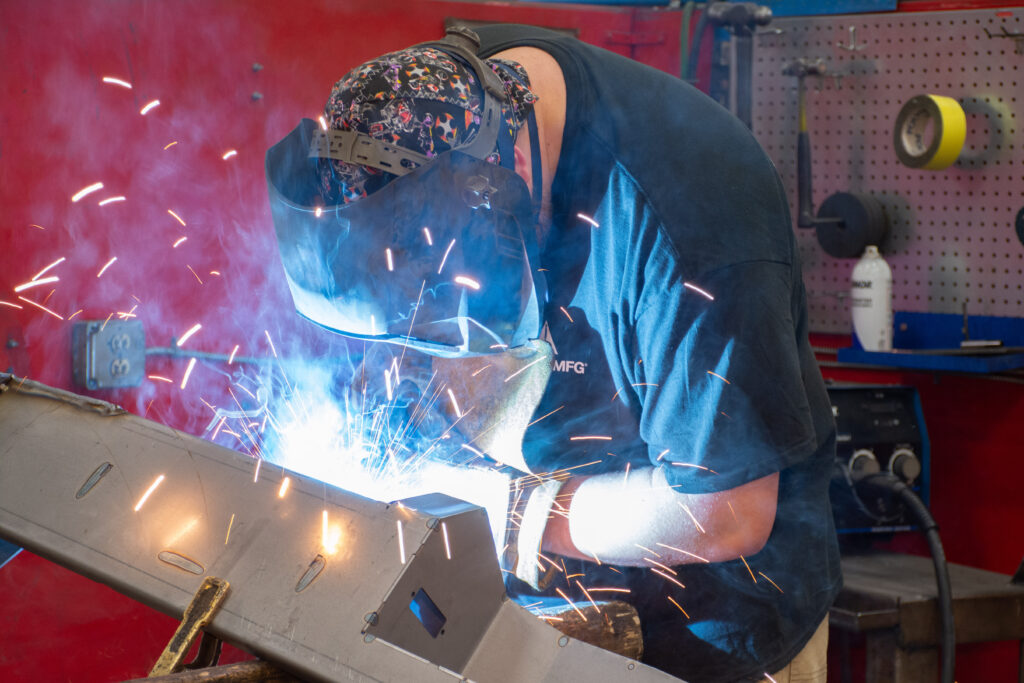Welding safety tips for welder safety
Tips for welding safety
Welders are skilled professionals who fuse metal pieces together to create strong and durable bonds. Due to the nature of this job, there are some inherent risks job seekers should consider before becoming a welder and several safety tips every welder should know and adhere to throughout the entirety of their career.
We’re taking a closer look at the potential dangers of welding without the necessary precautions and the essential safety measures that individuals must follow for a long, safe, and successful career. Whether you’re a seasoned pro or just starting out, these insights will be key to keeping you protected on the job.
Are welding professionals in demand today?
Welders are invaluable to a broad spectrum of sophisticated industries, from manufacturing and construction to automotive and aerospace. Some of the responsibilities for this profession include:
- Performing precise and high-quality welds on metal components
- Adhering to strict safety protocols to prevent accidents
- Maintaining and calibrating welding equipment
- Reading and understanding technical drawings and blueprints
- Preparing metal surfaces for welding through cleaning and grinding
- Ensuring welded joints meet industry standards
There are more than 400,000 welders working in the United States, and the profession is poised for a bright future. The U.S. Bureau of Labor Statistics projects an average of 42,600 annual job openings for welders, cutters, solderers, and brazers over the next decade.
Moreover, the American Welding Society predicts a shortage of 360,000 skilled welding professionals by 2027, making it the perfect time to pursue a career in the field if it’s something you’ve been considering.

The risks of welding without the proper safeguards in place
While the outlook for new opportunities in this field is promising, a career in welding is not without its risks. To mitigate risks, it is crucial to learn and maintain proper safety standards. Failing to do so could lead to a host of severe consequences, including a higher risk of injuries such as burns, electrical shocks, and eye damage, or long-term health issues from exposure to toxic fumes. In addition to health risks, insufficient safety measures can also lead to structural defects in welded components, potential equipment damage, and costly workplace accidents for employers.
That’s why emphasizing safety is essential to protecting both yourself and others in the vicinity from potential hazards. The Bureau of Labor Statistics reports that over 560,000 workers are injured annually due to welding accidents. And while the risky nature of the job may make that unsurprising, welding professionals can take considerable steps to minimize potential dangers..
6 tips and precautions for improving welding safety
Welding demands unwavering attention to safety, and ensuring a secure work environment is integral to protecting yourself and others. . Consider the following six tips to enhance your welding safety throughout your career.
1. Wear the proper protective gear
Welding safety starts with what you’re wearing. Experienced welders know to wear protective welding helmets with properly darkened lenses, flame-resistant clothing, welding gloves, and steel-toed boots to guard against the intense heat, sparks, and UV radiation generated during the welding process.
2. Ensure adequate ventilation
The act of welding produces harmful fumes and gasses, including welding fumes, carbon monoxide, and ozone. For the safety of yourself and others, it’s best to always work in well-ventilated areas to minimize inhalation exposure. You might also consider using exhaust fans or fume extractors to remove harmful contaminants from your workspace.
3. Inspect and maintain equipment
Faulty equipment is a quick road to preventable accidents and injuries, so it is critical to regularly inspect your welding equipment for any damaged cables, frayed wires, or worn-out components. This inspection should include ensuring all connections are secure and that your gas cylinders are in good condition.
4. Read manuals and know your materials
Ensure you’re well acquainted with relevant operating manuals and information procedures to maximize your machine’s potential while maintaining safety. Simultaneously, it’s critical to stay aware of possible hazards or toxins associated with welding different metals and take the appropriate precautions. This might include using the correct shielding gas or employing respiratory protection when necessary.
5. Practice safe electrical handling
Because welding involves high electrical currents, it’s necessary to insulate yourself from direct contact with metal surfaces and water to prevent electrical shocks. Before getting started on your next welding project, take care to ensure your welding machine is grounded correctly and that all electrical connections are secure.
6. Establish a fire safety protocol
Due to unavoidable welding sparks and hot metal fragments that can easily ignite flammable materials in your workspace, it is important to keep a fire extinguisher nearby and determine a fire safety protocol. You should also clear the area of any combustible materials before jumping in and use welding curtains or shields to contain sparks for additional safety.
Jumpstart a career in welding with help from a trusted partner
The growing demand for capable welding professionals presents an exciting opportunity for those looking to become a welder. However, it’s equally important to recognize the vital role safety plays in ensuring your well-being, job longevity, and welding career success.
At ResourceMFG, we’re dedicated to connecting qualified talent with rewarding positions at leading companies across the nation. With competitive salaries, comprehensive benefits, and an emphasis on well-being, we’re here to help you jump-start a successful and fulfilling career today.
If you’re ready to take the next step in the field of welding, discover all of the career opportunities available at ResourceMFG, or contact your local branch to learn more about how we can help you.